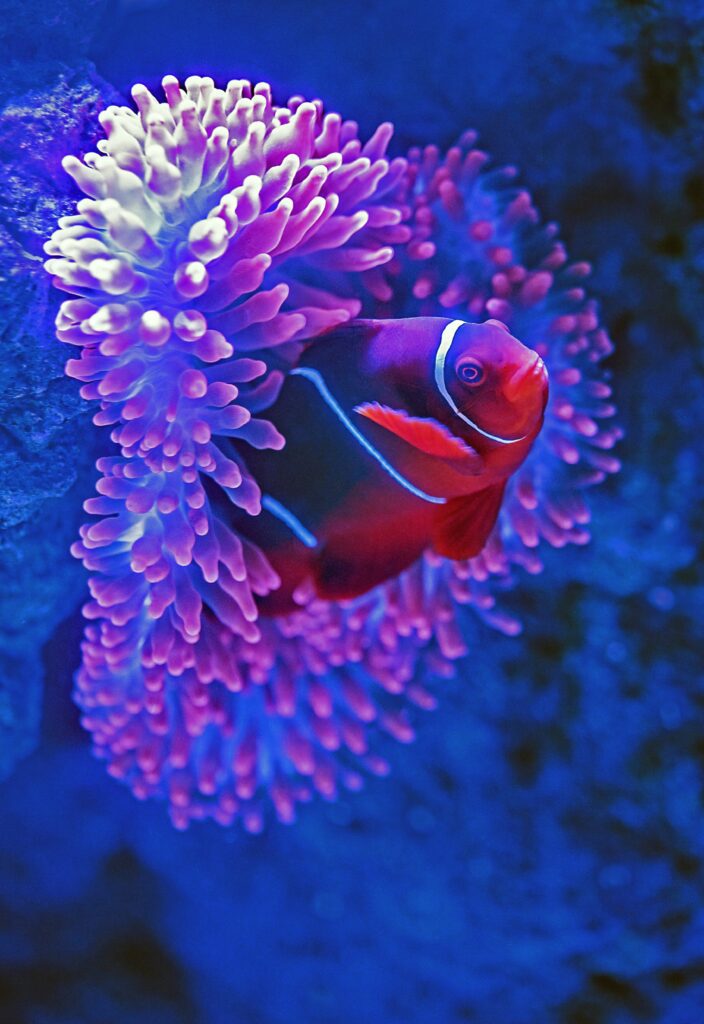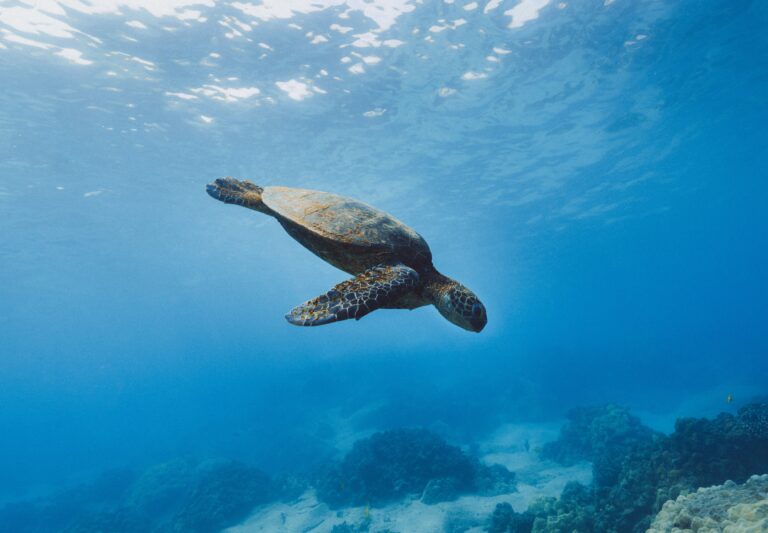Introduction
The world’s oceans, covering over 70% of the Earth’s surface, are essential to the health of our planet. Unfortunately, the impact of human activities on these vast and vital ecosystems extends beyond just pollution and climate change. Ocean noise pollution, often overlooked, poses a significant threat to marine life and biodiversity. This article explores the intricate relationship between ocean conservation and the battle against noise pollution. By understanding the sources and consequences of ocean noise and recognizing the role of conservation efforts, we can pave the way for a healthier and quieter marine environment.
Understanding Ocean Noise Pollution
Sources of Ocean Noise Pollution
Ocean noise pollution originates from various anthropogenic and natural sources. Human activities such as shipping, industrial operations, and naval exercises are major contributors. Ship traffic, characterized by engine noise, propeller cavitation, and sonar systems, can create intense underwater soundscapes. Additionally, seismic surveys for oil and gas exploration emit powerful blasts, impacting large areas.
Natural sources include underwater volcanic activity and marine life sounds. While natural sounds are part of the ocean environment, the increased volume of human-generated noise is disrupting these natural acoustic patterns. Understanding and mitigating these sources are crucial for preserving the health of marine ecosystems.
Effects on Marine Life and Ecosystems
Ocean noise pollution poses severe threats to marine life, particularly species reliant on sound for communication, navigation, and feeding. Marine mammals, such as whales and dolphins, often use echolocation for these purposes. Excessive noise interferes with their ability to communicate and locate prey, leading to disorientation, stress, and potential strandings.
Fish, essential to marine ecosystems, also experience negative impacts. Larval fish, for instance, rely on hearing to locate suitable habitats. Noise pollution can affect their growth, development, and survival. Furthermore, disruptions in predator-prey dynamics may alter the balance of marine ecosystems, with cascading effects on biodiversity.
Human Activities Contributing to Noise Pollution
Several human activities contribute significantly to ocean noise pollution. Shipping, due to its global nature, is a primary culprit. The increase in maritime trade has led to a surge in vessel traffic, amplifying noise levels in coastal and open ocean environments. Additionally, naval exercises, including the use of sonar, contribute intense, low-frequency sounds that can travel vast distances underwater.
Industrial activities, such as offshore drilling and construction, also generate substantial noise. Anthropogenic noise, characterized by its low-frequency and persistent nature, can have far-reaching consequences. Addressing these human activities is imperative for minimizing the impact of noise pollution on marine ecosystems.
The Significance of Ocean Conservation
Protecting Biodiversity and Ecosystems
Ocean conservation is of paramount importance for safeguarding biodiversity and maintaining the health of marine ecosystems. Oceans cover over 70% of the Earth’s surface and support a staggering diversity of life. Coral reefs, for example, are often referred to as the “rainforests of the sea,” hosting an array of marine species. By protecting these ecosystems, we preserve not only individual species but also the intricate relationships that sustain life beneath the waves.
Biodiversity in the oceans contributes to ecological resilience, ensuring that marine ecosystems can adapt to environmental changes. Conservation efforts must prioritize the establishment of marine protected areas, sustainable fishing practices, and measures to reduce pollution. These actions are vital for maintaining the delicate balance that sustains life in the oceans.
Addressing Climate Change and Its Impact on the Oceans
Climate change poses a significant threat to the oceans, impacting sea levels, temperatures, and ocean chemistry. Ocean conservation is intricately linked to addressing climate change, as a healthy ocean plays a crucial role in mitigating its effects. Oceans act as carbon sinks, absorbing vast amounts of carbon dioxide from the atmosphere. However, this absorption leads to ocean acidification, harming marine life, especially organisms with calcium carbonate shells or skeletons.
Conserving the oceans involves supporting global initiatives to reduce greenhouse gas emissions. Additionally, protecting coastal habitats like mangroves and salt marshes helps buffer the impacts of rising sea levels and storm surges. Recognizing the interconnectedness of ocean health and climate stability underscores the urgency of comprehensive conservation measures.
Sustainable Practices and Their Role in Reducing Noise Pollution
In the realm of ocean conservation, adopting sustainable practices is critical for minimizing anthropogenic impacts, including noise pollution. Sustainable shipping practices, such as slow steaming and route optimization, can reduce the intensity of vessel noise. Furthermore, implementing quieter technologies in maritime activities and enforcing regulations to limit underwater noise emissions contribute to a quieter and healthier marine environment.
Promoting sustainable tourism and recreational activities also plays a role in reducing human impact on the oceans. Responsible whale-watching practices, for instance, prioritize the well-being of marine mammals by maintaining safe distances and minimizing disruptions. By embracing sustainability across various sectors, we can actively contribute to the preservation of ocean ecosystems and mitigate the threats posed by noise pollution.
Strategies for Combating Ocean Noise Pollution
Regulations and Policies
Implementing effective regulations and policies is a crucial strategy for combatting ocean noise pollution. Governments and international bodies play a pivotal role in setting guidelines and standards that govern maritime activities. By establishing and enforcing regulations that limit noise emissions from ships, offshore industries, and naval exercises, we can mitigate the impact on marine life.
One example is the International Maritime Organization’s (IMO) efforts to address noise pollution through the International Maritime Noise Code. This code provides guidelines for the reduction of underwater noise from commercial ships. Additionally, designating marine protected areas with specific regulations to control human activities can create sanctuaries where marine life can thrive without the constant disruption of anthropogenic noise.
Technology and Innovation
Advancements in technology offer promising solutions to combat ocean noise pollution. Quieter ship designs, such as those incorporating noise-reducing propellers and hull coatings, can significantly decrease the acoustic footprint of maritime traffic. Innovations in the development of low-noise engines and propulsion systems contribute to a quieter and more environmentally friendly maritime industry.
Underwater noise generated by activities like construction and resource exploration can be minimized through the application of novel technologies. For instance, the use of bubble curtains during pile driving can help dampen the sound generated during offshore construction projects. Embracing and incentivizing the adoption of these technologies is essential for fostering a more sustainable and ocean-friendly approach to human activities.
Public Awareness and Education
Raising public awareness and educating communities about the impact of ocean noise pollution is a vital aspect of combating this environmental challenge. Through outreach programs, educational campaigns, and public forums, individuals can gain a deeper understanding of the consequences of their actions on marine ecosystems. Informed citizens are more likely to support and demand sustainable practices from industries and policymakers.
Public awareness initiatives can also inspire behavioral changes, encouraging individuals to make choices that reduce their contribution to ocean noise pollution. Responsible boating practices, for example, can include minimizing speed in areas known for marine life presence and avoiding sensitive habitats. By fostering a sense of responsibility and stewardship among the public, we can collectively contribute to the reduction of ocean noise pollution and the preservation of marine biodiversity.

Case Studies: Success Stories in Ocean Noise Reduction
Examples of Effective Conservation Efforts
Several case studies demonstrate successful efforts in reducing ocean noise pollution and their positive impacts on marine ecosystems. One notable example is the implementation of ship quieting technologies in the Vancouver Fraser Port Authority in Canada. By retrofitting vessels with noise reduction measures, such as advanced propellers and hull designs, the port successfully lowered underwater noise levels. This initiative showcases the feasibility of integrating technological solutions to address noise pollution from a major shipping hub.
Another success story is the establishment of the Hawaiian Islands Humpback Whale National Marine Sanctuary. Through a combination of strict regulations, including vessel speed limits and seasonal no-go zones, and public outreach programs, the sanctuary has created a safer environment for humpback whales during their breeding and calving seasons. This case highlights the effectiveness of combining regulatory measures with community engagement to protect marine life from the detrimental effects of human-generated noise.
Positive Impacts on Marine Life and Ecosystems
The success stories in ocean noise reduction have had discernible positive impacts on marine life and ecosystems. In the case of the Vancouver Fraser Port Authority, studies indicate a reduction in stress levels among marine mammals, particularly killer whales, in the region. The quieter underwater environment allows these animals to communicate more effectively, locate prey, and navigate their surroundings without the constant disturbance of anthropogenic noise.
Similarly, in the Hawaiian Islands Humpback Whale National Marine Sanctuary, the implemented measures have contributed to a decrease in instances of vessel collisions with whales. The regulation of human activities in critical habitats has created a safer space for marine species, fostering a healthier and more resilient ecosystem. These positive outcomes underscore the importance of proactive measures in mitigating the impacts of ocean noise pollution.
Lessons Learned and Potential for Scalability
These case studies offer valuable lessons for addressing ocean noise pollution on a broader scale. One key lesson is the effectiveness of a holistic approach that combines regulatory frameworks, technological innovation, and community engagement. The success of conservation efforts is often contingent on collaboration between government agencies, industries, and local communities, emphasizing the importance of multi-stakeholder involvement.
Additionally, the scalability of these initiatives depends on the adaptability of strategies to different regions and contexts. The Vancouver Fraser Port Authority’s ship quieting technologies, for instance, could serve as a model for other major ports globally. The Hawaiian Islands Humpback Whale National Marine Sanctuary’s combination of regulations and outreach programs provides a blueprint for protecting marine life in diverse ecosystems. By extracting lessons from these success stories, we can develop scalable and tailored approaches to combat ocean noise pollution on a global scale.
VIDEO CREDITS: VOX
FAQs
Q. How does ocean noise pollution affect marine life?
A. Ocean noise pollution disrupts marine life by interfering with communication, navigation, and vital behaviors of various species, ultimately jeopardizing their survival.
Q. Can Marine Protected Areas effectively reduce ocean noise pollution?
A. Yes, Marine Protected Areas act as crucial sanctuaries where human activities are limited, contributing to the reduction of noise pollution and the protection of marine ecosystems.
Q. What role do sustainable shipping practices play in combating ocean noise pollution?
A. Sustainable shipping practices, including slower vessel speeds and quieter technologies, significantly contribute to minimizing noise pollution and promoting a healthier marine environment.
Q. How can technology aid in reducing ocean noise pollution?
A. Cutting-edge technologies, such as underwater noise reduction systems, play a pivotal role in combating ocean noise pollution by addressing its sources and mitigating their impact on marine life.
Q. Why is community engagement essential in the fight against ocean noise pollution?
A. Community engagement is vital for raising awareness, promoting responsible behaviors, and fostering collective efforts to address and combat ocean noise pollution.
Q. How can individuals contribute to ocean conservation and reducing noise pollution?
A. Individuals can contribute by supporting and participating in conservation initiatives, advocating for sustainable practices, and spreading awareness about the impact of noise pollution on marine ecosystems.
Conclusion
As we delve into the depths of the world’s oceans, it becomes clear that the fight against noise pollution is an integral part of the broader mission of ocean conservation. The harmonious coexistence of human activities and marine ecosystems is not only possible but imperative for the well-being of our planet. Through a combination of regulatory measures, technological advancements, and a collective commitment to sustainability, we can mitigate the impacts of noise pollution on our oceans. By embracing the principles of ocean conservation, we not only ensure the survival of diverse marine life but also contribute to a more balanced and resilient global environment. The responsibility lies with each of us to make choices that protect the oceans and preserve the delicate balance of life beneath the waves.
UP NEXT
Ocean Conservation and the Preservation of Coastal Bioenergy Resources



